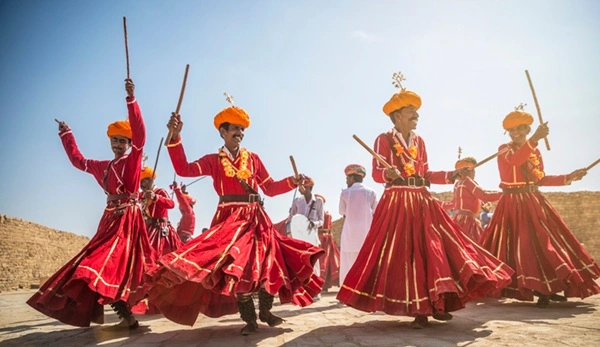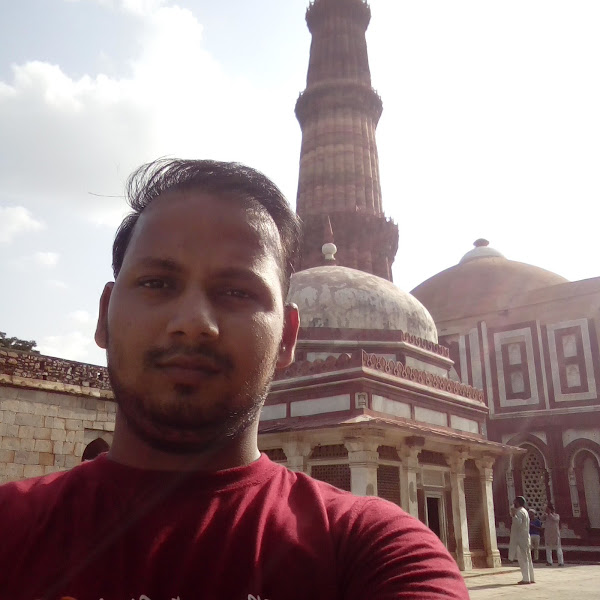Rajasthan, often called the “Land of Kings”, is celebrated for its royal history, desert landscapes, colorful festivals, and rich cultural heritage. Among its many treasures, the folk dances of Rajasthan stand out as a dynamic expression of its people’s spirit, traditions, and community life.
Unlike classical Indian dances rooted in temple traditions, Rajasthani dances are deeply connected to rural life, rituals, festivals, and storytelling traditions. From the graceful swirls of Ghoomar to the serpentine movements of Kalbelia, these dances captivate audiences with their vibrant costumes, rhythmic music, and cultural symbolism.

Major Traditional and Folk Dances of Rajasthan
| Dance Name | Type | Region/Community | Short Description |
| Ghoomar | Folk / Ritual | Udaipur, Marwar | Graceful women’s dance with circular movements. |
| Kalbelia | Tribal / Sensual | Kalbelia community | Snake-like dance performed by the Kalbelia tribe. |
| Bhavai | Acrobat / Ritual | Udaipur, Chittorgarh | Balancing earthen pots while dancing. |
| Chari | Ritual / Festive | Kishangarh, Ajmer | Women dance balancing brass pots with lit lamps. |
| Kathputli | Puppet Dance | Jaipur, Jodhpur | Storytelling through colorful puppets. |
| Gair | Men’s Festive | Mewar, Marwar | Performed with sticks in circular formations. |
| Terah Taal | Devotional Dance | Kamad community | Women perform with 13 cymbals tied to their body. |
| Kachhi Ghodi | Storytelling | Shekhawati region | Men in horse costumes narrate tales of bravery. |
| Fire Dance | Tribal / Ritual | Bhil tribe, Jaisalmer | Performed around fire with daring movements. |
Detailed Explanation of Major Dances
1. Ghoomar – The Royal Women’s Dance
- Origin: Developed by the Bhil tribe and later embraced by Rajput women, especially in Udaipur and Marwar regions.
- Cultural Significance: Performed during weddings, festivals like Teej and Holi, symbolizing femininity, grace, and joy.
- Costumes: Women wear colorful ghagra (long skirts) with mirror work, heavy jewelry, and odhnis.
- Instruments: Dhol, nagada, and harmonium.
- Occasions: Weddings, festivals, and state cultural programs.
- Image Suggestion: Women in swirling ghagras performing Ghoomar in circles.
2. Kalbelia – The Snake Dance of Rajasthan
- Origin: Belongs to the Kalbelia tribe, traditionally snake charmers. The dance imitates snake movements.
- Cultural Significance: Recognized by UNESCO as Intangible Cultural Heritage, symbolizing tribal identity and resilience.
- Costumes: Black embroidered lehenga-choli decorated with silver threads and jewelry.
- Instruments: Been (pungi), dholak, khanjari.
- Occasions: Performed at fairs, Pushkar Mela, and during Holi celebrations.
- Image Suggestion: Kalbelia women in black costumes swirling like snakes.
3. Bhavai – The Balancing Act
- Origin: A traditional dance from Udaipur and Chittorgarh, linked with rituals of endurance and skill.
- Cultural Significance: Women balance up to 8–9 pots on their heads while dancing on sharp objects like swords. Symbolizes strength and devotion.
- Costumes: Bright lehengas with embroidery and mirror work.
- Instruments: Harmonium, sarangi, and dholak.
- Occasions: Performed at weddings and village festivals.
- Image Suggestion: Woman balancing pots while performing Bhavai.
4. Chari Dance – The Lamp Dance
- Origin: From Kishangarh and Ajmer regions, where women fetch water in brass pots.
- Cultural Significance: Represents prosperity and celebration of daily life.
- Costumes: Women wear vibrant ghagras and veils, balancing brass pots with burning lamps.
- Instruments: Nagada, dhol, harmonium.
- Occasions: Weddings, Holi, and Diwali festivals.
- Image Suggestion: Women dancing with brass pots containing flames.
5. Kathputli – The Puppet Dance
- Origin: Over 1,000 years old, performed by Bhat community puppeteers.
- Cultural Significance: A storytelling medium narrating mythological tales, moral lessons, and Rajput bravery.
- Costumes: Colorful wooden puppets dressed in Rajasthani attire.
- Instruments: Dholak and narrations by puppeteers.
- Occasions: Village fairs, Pushkar Mela, and cultural shows.
- Image Suggestion: Puppeteer performing with decorated Kathputlis.
6. Gair Dance – The Men’s Stick Dance
- Origin: Mainly from Mewar and Marwar regions.
- Cultural Significance: Performed by men in circles with sticks, symbolizing valor and energy.
- Costumes: Long pleated tunics with turbans.
- Instruments: Dhol, nagada, shehnai.
- Occasions: Holi and Janmashtami festivals.
- Image Suggestion: Men dancing in circles with sticks.
7. Terah Taal – The Cymbal Dance
- Origin: Belongs to the Kamad community, who perform devotional dances for deities.
- Cultural Significance: Women tie 13 manjiras (cymbals) to their body and create rhythms while dancing. Dedicated to devotional themes.
- Costumes: Red ghagras with traditional jewelry.
- Instruments: Manjira, dholak, and harmonium.
- Occasions: Temple festivals and devotional gatherings.
- Image Suggestion: Woman performing with manjiras tied to hands and feet.
8. Kachhi Ghodi – The Dance of Mock Horses
- Origin: Emerged in the Shekhawati region, performed by men wearing horse costumes.
- Cultural Significance: Narrates tales of bravery, bandits, and historical legends.
- Costumes: Colorful horse costumes, turbans, and swords.
- Instruments: Dhol and narrative singing.
- Occasions: Performed during marriages and village fairs.
- Image Suggestion: Men in horse costumes performing Kachhi Ghodi.
9. Fire Dance – The Bhil Tribal Dance
- Origin: Performed by the Bhil tribe in Jaisalmer and Bikaner regions.
- Cultural Significance: A daring dance where men jump into flames, showcasing fearlessness and devotion.
- Costumes: Traditional tribal attire with turbans and anklets.
- Instruments: Dhol, nagada, and chants.
- Occasions: Holi, fairs, and tribal gatherings.
- Image Suggestion: Tribal men performing around flames.
FAQs
Q1. Which is the most famous dance of Rajasthan?
👉 The Ghoomar dance is the most famous and recognized dance of Rajasthan, often performed during weddings and festivals.
Q2. How many folk dances does Rajasthan have?
👉 Rajasthan has more than 10 major folk dances, with Ghoomar, Kalbelia, Bhavai, and Chari being the most popular.
Q3. Which Rajasthani dance is recognized by UNESCO?
👉 The Kalbelia dance is recognized as part of UNESCO’s Intangible Cultural Heritage of Humanity.
Q4. Are Rajasthani dances performed only by women?
👉 No, while dances like Ghoomar and Chari are women-centric, others like Gair, Kachhi Ghodi, and Fire Dance are performed mainly by men.
Conclusion
The folk dances of Rajasthan are more than entertainment—they are living traditions that embody the state’s history, rituals, and community values. Each performance, whether the elegance of Ghoomar, the daring of Bhavai, or the storytelling of Kathputli, narrates the soul of Rajasthan.
These dances reflect the valor of Rajputs, devotion of tribes, and vibrancy of rural life, making Rajasthan a cultural jewel of India. Even today, they remain a bridge between past and present, carrying forward centuries-old traditions with pride.

Hello, I’m Kapil Kumar, a seasoned SEO expert and blogger at WinnersList.in. My mission is to spotlight exceptional individuals and organizations across various domains. Through curated lists, profiles, and inspiring stories, I aim to celebrate outstanding achievements and inspire the next generation of champions. Join me in this journey.
